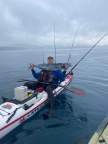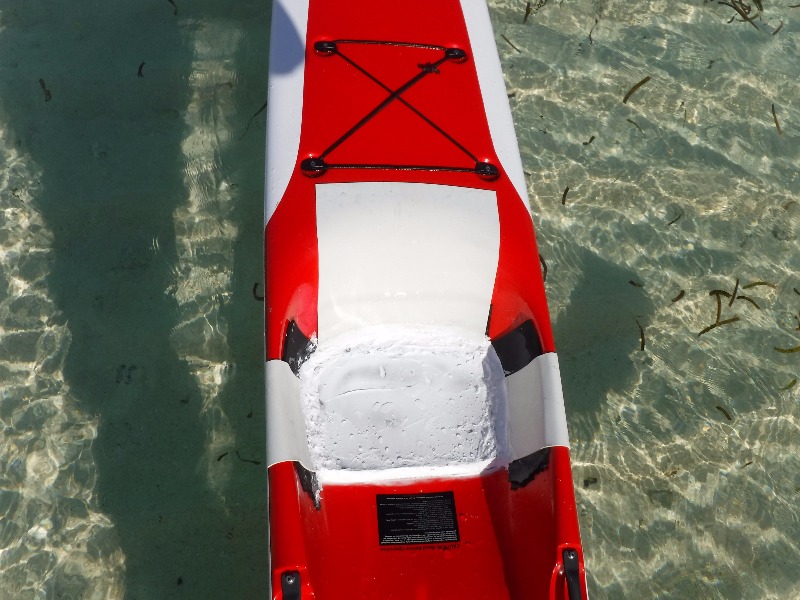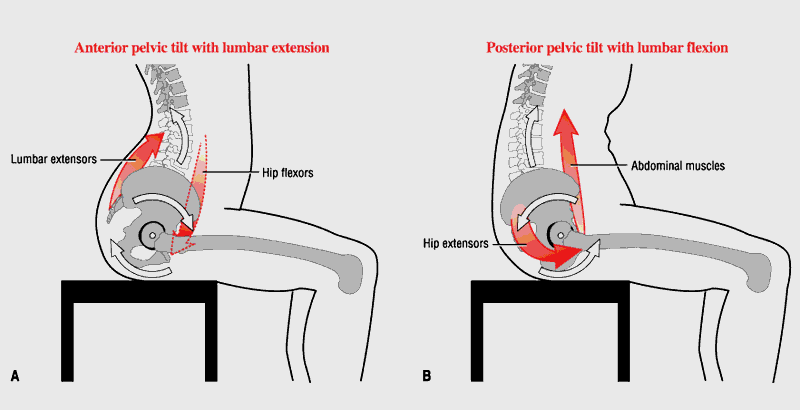- Posts: 211
- Thank you received: 19
Forward leaning bucket?
KR McGregor Rhythm, V10Sport, Swordfish S, Fenn Tarpon S, Fenn XT, Twogood Chalupski, Findeisen Stinger spec. Had: V12, Stellar SE, Huki S1-X, Burton wedge2, Fenn Tarpon
Please Log in or Create an account to join the conversation.
- owenfromwales
-

- Offline
- Elite Member
- Posts: 257
- Thank you received: 31
Owen
189cm 90~100kg
Present skis:
2017 Stellar SEI 2G
1993 Gaisford Spec Ski
1980s Pratt Spec Ski
1980s UK Surf Skis Ocean Razor
Previous
1980s UK Surf Skis Ocean Razor X 3
1987 Kevlar Chalupsky (Hummel) (Welsh copy!)
1988 Kevlar Double Chalupsky
1992 Hammerhead spec
2000 Fenn copy
Please Log in or Create an account to join the conversation.
Wesley Echols
SurfskiRacing.com
#1 in Surfski Reviews.
Please Log in or Create an account to join the conversation.
- balance_fit
-

- Offline
- Junior Member
- Posts: 35
- Thank you received: 5
I also paddle a rather ''old'' XT, (2007) and did experience a bit of slump posture for awhile when I recently returned to ski paddling
Not wanting to use any padding in the cockpit that would affect hip rotation, I approached the issue from the side of the foot well.
First, I added heel pads, cut from SUP traction pads. This would enhance contact with the foot braces, since the angle of the XT foot braces is not right for my limited ankle dorsiflexion. Since I have tight calves, the rather vertical angle of my XT's foot braces would force my feet into pronation and rotate my legs, and for instance, my pelvis out of neutral. The heel pads solved this issue, the pelvis remains neutral and no slumping happens.
Second, I've placed attention to hamstring stretching, and pelvic position awareness training.
Sitting on the bare floor, I would achieve a neutral pelvis, measure the resulting knee flexion that my hamstrings would allow, and extrapolate these measurements and position to my ski foot brace adjustment.
Sitting exercises to further increase tolerance to the neutral pelvic position were added. As an example, stretch band row, vertical rows with a weighted bar and over head pullover to further challenge the neutral pelvic posture.
Once paddling, I remain in constant contact with the foot brace, since this eases the attainment of neutral pelvic position.
This has worked for me. Maybe the heel angle is not your issue. But finding, and attaining and holding neutral pelvic position, might save your spine from future issues.
Regards
JD
Simple, not easy.
Please Log in or Create an account to join the conversation.
- zachhandler
-

- Offline
- Platinum Member
- Posts: 799
- Thank you received: 202
Current Skis: Nelo Vanquish AIR, Epic V10g4, NK 670 double, NK exrcize, Carbonology Feather, Think Jet, Knysna Sonic X
Former Skis: Epic v10g3, Kai Waa Vega, Epic V12 g2, Epic V12 g1, Epic v10 double, Nelo 550 g2, Fenn Elite S, Custom Kayaks Synergy
Please Log in or Create an account to join the conversation.
- [email protected]
-

- Offline
- Admin
- Posts: 1839
- Thank you received: 411
I've not really thought about it from a long distance point of view.
But what I do know is that a cutaway at the back of the bucket is critical for downwind paddling, so that you can lean back comfortably. It's particularly important in shorter skis like the Nelos so that you can work to keep the nose from diving at the bottom of a wave.
Rob
Currently Epic V10 Elite, Epic V10 Double.
Previously: Swordfish S, Evo II, Carbonology Zest, Fenn Swordfish, Epic V10, Fenn Elite, Red7 Surf70 Pro, Epic V10 Sport, Genius Blu, Kayak Centre Zeplin, Fenn Mako6, Custom Kayaks ICON, Brian's Kayaks Molokai, Brian's Kayaks Wedge and several others...
Please Log in or Create an account to join the conversation.
KR McGregor Rhythm, V10Sport, Swordfish S, Fenn Tarpon S, Fenn XT, Twogood Chalupski, Findeisen Stinger spec. Had: V12, Stellar SE, Huki S1-X, Burton wedge2, Fenn Tarpon
Please Log in or Create an account to join the conversation.
- balance_fit
-

- Offline
- Junior Member
- Posts: 35
- Thank you received: 5
robin.mousley wrote: Interesting post.
I've not really thought about it from a long distance point of view.
Thanks for your thoughts Rob. You've brought an interesting perspective into the topic.
The pelvis is quite an interesting structure to address when analyzing movement, since it's position affects, and is affected by many other structures. From a movement chain point of view, kinetic chain if you will, the pelvis will achieve a position (tilt) in relation to external influences: On our skis, the position of the feet, and legs, in relation to the foot brace/plate will influence pelvic tilt, since it is quite a solid base of support.
Foot plate distance, specially in presence of tight hamstrings, and fatigue, may also be factors that affect pelvic tilt.
Interestingly, based on the "Power circles" concepts, the paddle in the water may also contribute to muscle action happening from the paddle to hip direction, influencing pelvis action.
Back to pelvic tilt, from the foot brace perspective. This tilt will manifest as either anterior, where the upper rim of the pelvis (iliac crest) will lean forward, towards the bow of the ski, or posterior, with a rearward lean.
Our concerns with pelvic tilt in this topic of discussion are mostly with the posterior lean/tilt. Tight hamstrings and weak lumbar muscles can be significant contributors to posterior pelvic tilt. This tilt may bring about several issues, such as forward sliding in the bucket, rubbing coccyx, numb legs (sciatic compression), slumped posture, restrained breathing, shoulder impingement, neck pain, etc.
Since contact with the foot brace is fundamental in the forward stroke, and our hips are a massive point of movement synergies related to paddling (rotation) and balance, it does make sense to address hip position/tilt, and strive to achieve a neutral tilt. I believe that looking at our foot plates as a point of reference does make sense whenever addressing our hips position.
All the above being said, we can't forget that individual anatomy, pelvic position awareness and capability, and, bucket shape are factors to consider.
Regards
JD
Simple, not easy.
Please Log in or Create an account to join the conversation.
- balance_fit
-

- Offline
- Junior Member
- Posts: 35
- Thank you received: 5
mickeyA wrote: Very interesting about the heel pad. I am imagining keeping foot plate in same location so the balls of my feet and toes stay as is, but by padding only the heels, I effectively push my hips back, but not my head. ... I go to yoga class once a week and certainly stretch before races, but I do have lifelong relatively tight hamstrings, so I have a tougher time sitting low (heels and butt ~same level) and still having slight forward lean ...
Hi Mickey A
You have brought two interesting points: First, when you push your hips back, presumably, if you have slid forward. This action pushes the whole pelvis back, without addressing tilt. Since this action increases the distance between the foot plate and the pelvis even more, it places increases tension on the hamstrings, and will increase unwanted posterior tilt. In fact, you've slid forward since your pelvis "tries" to achieve a neutral tilt by decreasing the distance between foot plate and hip. But, the hip may slide into the bucket's hump, further increasing posterior tilt. Please read my reply to Rob, where I explain pelvic tilt.
The second point you bring is very relevant. You do try to address the hamstring tightness by stretching and doing yoga. While this strategy might help, it doesn't address the lumbar muscles that help keep the pelvis, and lumbar vertebrae neutral. Since you identify your postural issue as one created by sitting with feet and hips level, I feel this is where most attention should be placed. I would rather recommend Pilates training, on a one to one instruction. Or, have your position analyzed by a clinician with experience in paddling.
Please keep in mind that achieving a neutral pelvis successfully, with both feet at the foot brace, is a first step. The next one is pushing of the foot brace to engage hip rotation, where the pushing leg lengthens, and the hamstring will pull that side pelvis posteriorly. If one is leaning forward to catch a bump, the hamstrings will pull even more. All this means that one should be able to sit with neutral pelvic tilt, rotate and lean forward without hamstring inhibition. This might require reconsidering your paddling shoes, foot plate distance, and angle as well.
Last, you explain that your issue sitting level also manifests as a forward lean of the upper body. This means that the spine is attempting to compensate for the pelvic posterior tilt, to keep your head level. This places undue stress on the spine and might cause injury.
Regards
JD
Simple, not easy.
Please Log in or Create an account to join the conversation.
- Wombat661
- Visitor
Hamstring is basically like a rope that connects the lower leg with the pelvic. When you straighten out the knee, the lower leg pulls on the hamstring muscle which tugs on the pelvic and rotates it backward. We don't want that. The solution is to bend the knee to let out some of that muscle to stop it from fighting the lumbar muscle to rotate the pelvic up.
I do find that bending the knee makes paddling more comfortable. Didn't know why until reading your description and seeing the picture.
Please Log in or Create an account to join the conversation.
- balance_fit
-

- Offline
- Junior Member
- Posts: 35
- Thank you received: 5
Excellent resource. Visualizing the details makes the explanation more accessible. Allow me to look around for an image of the pelvic region and the main players regarding posture, while seated.
Thanks,
JD
Simple, not easy.
Please Log in or Create an account to join the conversation.
- balance_fit
-

- Offline
- Junior Member
- Posts: 35
- Thank you received: 5
This simple diagram that I attached shows the concept of pelvic tilt from a sideways perspective.
Please keep in mind that the pelvis is able to move in two other directions that are evident while walking, but not so much on a ski.
What should concern us as paddlers is that the bucket can not play the role of a pelvic tilting device. If we could create such a surface on the ski's bucket, designed to prevent sliding down the bucket as consequence of tight hamstrings, this surface would need to be angled down towards the stern of the ski. Think of sitting in the hump. This would have the effect of further pushing the pelvis into posterior tilt!
Regards
JD
Simple, not easy.
Please Log in or Create an account to join the conversation.
KR McGregor Rhythm, V10Sport, Swordfish S, Fenn Tarpon S, Fenn XT, Twogood Chalupski, Findeisen Stinger spec. Had: V12, Stellar SE, Huki S1-X, Burton wedge2, Fenn Tarpon
Please Log in or Create an account to join the conversation.
- zachhandler
-

- Offline
- Platinum Member
- Posts: 799
- Thank you received: 202
I hope that makes sense. Tight hamstrings will impede almost every aspect of the stroke, and also make it hard to get comfortable in a bucket.
I have horribly tight hamstrings and I am really bad about stretching them. I lack discipline in that regard, and I suffer the consequences: bucket discomfort, hunched back, sore shoulders.
Current Skis: Nelo Vanquish AIR, Epic V10g4, NK 670 double, NK exrcize, Carbonology Feather, Think Jet, Knysna Sonic X
Former Skis: Epic v10g3, Kai Waa Vega, Epic V12 g2, Epic V12 g1, Epic v10 double, Nelo 550 g2, Fenn Elite S, Custom Kayaks Synergy
Please Log in or Create an account to join the conversation.
- owenfromwales
-

- Offline
- Elite Member
- Posts: 257
- Thank you received: 31
I reckon the most comfortable bum pads are ones you make yourself. Get the stuff in twelve inch square sheets, 5mm or 10 mm thickness, from a good hardware store. Cut each to shape and gradually build up. Silicon will hold it firmly in place whilst still allowing you to remove it one day without making a mess of your boat. The silicone can also be moulded on the sheet edges to smooth out any steps.
189cm 90~100kg
Present skis:
2017 Stellar SEI 2G
1993 Gaisford Spec Ski
1980s Pratt Spec Ski
1980s UK Surf Skis Ocean Razor
Previous
1980s UK Surf Skis Ocean Razor X 3
1987 Kevlar Chalupsky (Hummel) (Welsh copy!)
1988 Kevlar Double Chalupsky
1992 Hammerhead spec
2000 Fenn copy
Please Log in or Create an account to join the conversation.
- balance_fit
-

- Offline
- Junior Member
- Posts: 35
- Thank you received: 5
mickeyA wrote: Thanks for such good info. I finally got to paddle and I found putting a foam wedge at heels to lower the foot angle, to get toes well in front of heels, helps. Putting pad in lowest part of bucket, sitting higher, also helps. Putting pad in back of seat does make me sit up straighter or rotate my pelvis forward, and feels good, but rubs too much on my lower back.
Hi MickeyA
Glad to hear that using the wedge at the heels helped to address the foot board angle issue. You've reduced tension on your hamstrings by use of this adjustment and hip positioning should be a bit easier to achieve now.
I can't comment on bucket/back of seat pads since I don't use these, not even to address friction between body and bucket due to hip rotation. For those purposes I use a neoprene tight that has a friction reducing underside material. Can't remember how many millimeters thick it is, although it has to be worn out due to over use!
Regards
JD
Simple, not easy.
Please Log in or Create an account to join the conversation.
- balance_fit
-

- Offline
- Junior Member
- Posts: 35
- Thank you received: 5
zachhandler wrote: On the topic of hamstrings - tight hamstrings cause shoulder injuries. Tight hamstrings cause the pelvis to tip back. Then, to stay upright and not fall onto the backdeck, one must bend their spine into a hunched posture. This leaves the upper torso angled forward, which effectively forces one to raise their arms higher in order to paddle. Raised arms cause shoulder impingement and expose the rotator cuff to injury.
I hope that makes sense. Tight hamstrings will impede almost every aspect of the stroke, and also make it hard to get comfortable in a bucket.
I have horribly tight hamstrings and I am really bad about stretching them. I lack discipline in that regard, and I suffer the consequences: bucket discomfort, hunched back, sore shoulders.
Hi zachhandler
Thanks for bringing the shoulder issue and your experience with tight hamstrings into the topic. The relation of hamstrings and posture is an issue that many of us deal with on a daily basis. Not only sitting for extended periods at work/car/etc will shorten our hamstrings, but walking, running and other muscles imbalances do as well. And, the result is that overall posture suffers.
On the ski, a hunched posture will not only take shoulders out of alignment and predispose to rotator cuff injury, but also will restrict our breathing as well. We need to address the pelvic position issue so that the segments right above it, meaning from trunk to head, are able to align properly and contribute to a healthy stroke. This is done by achieving, as close as possible, a neutral pelvis.
Hamstring stretching, being a significant part of this situation, needs to be addressed. And hamstrings, being active both at the hip and knee, while being instrumental in postural control, are challenging to stretch. Daily hamstring stretching, even informally while sitting, can be effective. If it is programmed into our regular exercise activities and daily life, hamstring stretching will not be a painful activity. And we don't need to become rubber men/women either, to apply hamstring elasticity to our paddling sport.
Regards
JD
Simple, not easy.
Please Log in or Create an account to join the conversation.
KR McGregor Rhythm, V10Sport, Swordfish S, Fenn Tarpon S, Fenn XT, Twogood Chalupski, Findeisen Stinger spec. Had: V12, Stellar SE, Huki S1-X, Burton wedge2, Fenn Tarpon
Please Log in or Create an account to join the conversation.
- zachhandler
-

- Offline
- Platinum Member
- Posts: 799
- Thank you received: 202
Current Skis: Nelo Vanquish AIR, Epic V10g4, NK 670 double, NK exrcize, Carbonology Feather, Think Jet, Knysna Sonic X
Former Skis: Epic v10g3, Kai Waa Vega, Epic V12 g2, Epic V12 g1, Epic v10 double, Nelo 550 g2, Fenn Elite S, Custom Kayaks Synergy
Please Log in or Create an account to join the conversation.
"Success is not final, failure is not fatal: it is the courage to continue that counts." - Winston Churchill
Please Log in or Create an account to join the conversation.
Latest Forum Topics
-
- Paddling with rotator cuff injury
- 7 hours 55 minutes ago
-
- McGregor Rhythm questions
- 3 days 47 minutes ago





